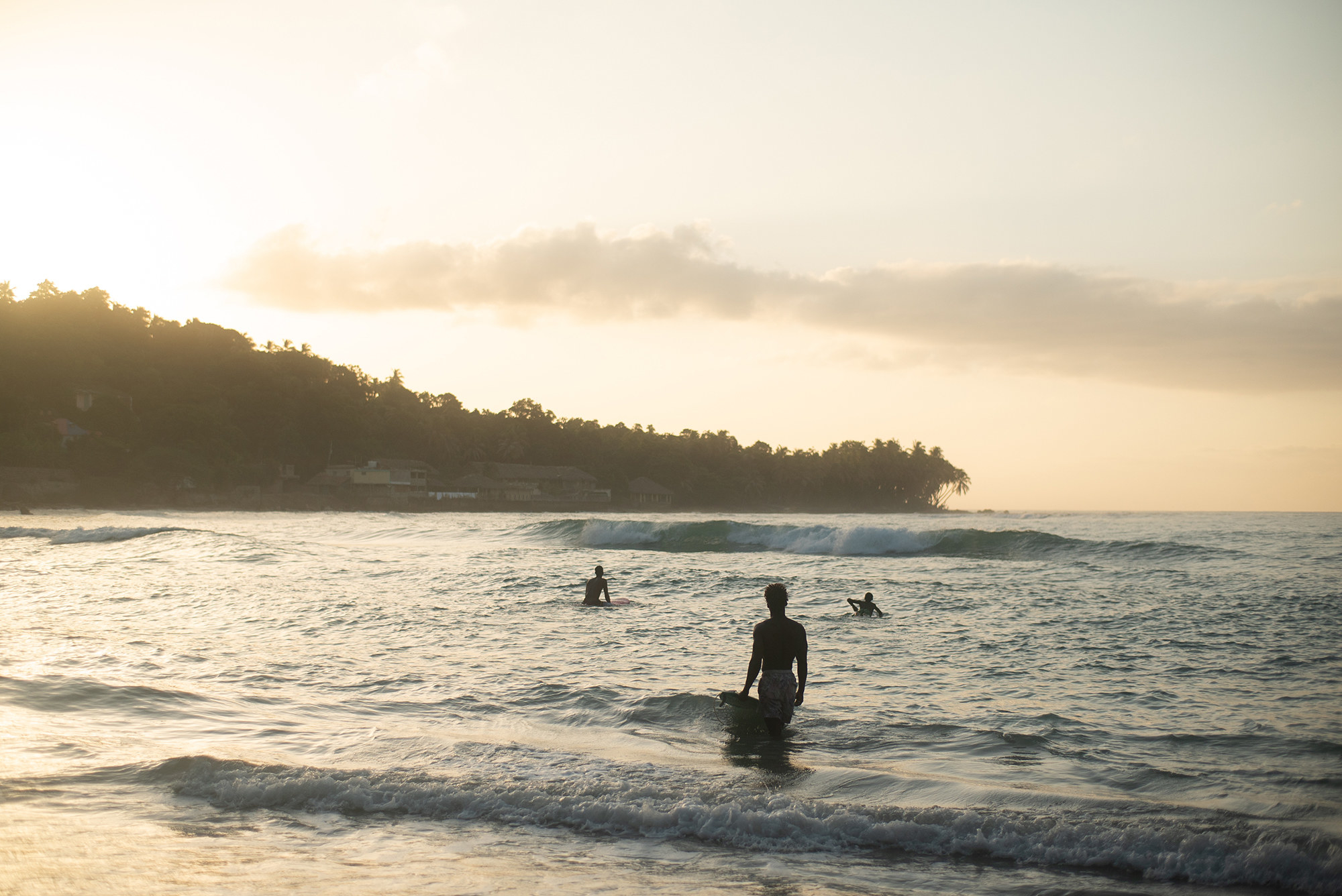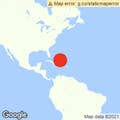
The sun had just crested above the hills when Samuel Jules walked past an abandoned house on Kabic Beach, in southern Haiti, wrapped the surfboard leash around his ankle, and glided into the turquoise waves.
For a few minutes during that August morning, 23-year-old Jules — the uncontested best surfer in the country — bobbed alone out in the water, where his dream of representing Haiti in the Olympics had been born. Soon, a couple more surfers paddled out and joined him, the town behind the group still asleep.
“When you surf, you forget all your problems and you just focus on what’s in front of you at the moment,” said Frantzy Andris, 22, one of the surfers.
There was a lot to leave behind, even in this paradisiac setting.
A month before, Haiti’s then-president, Jovenel Moïse, had been assassinated, plunging the Caribbean nation into a political crisis. The country’s nerves were taut as a series of arrests — of top officials and foreign mercenaries linked to the magnicide — dragged on for weeks. Abroad, a new barrage of dismal headlines from Haiti dominated newspaper front pages and primetime segments on TV: natural disasters, government failure, corruption.
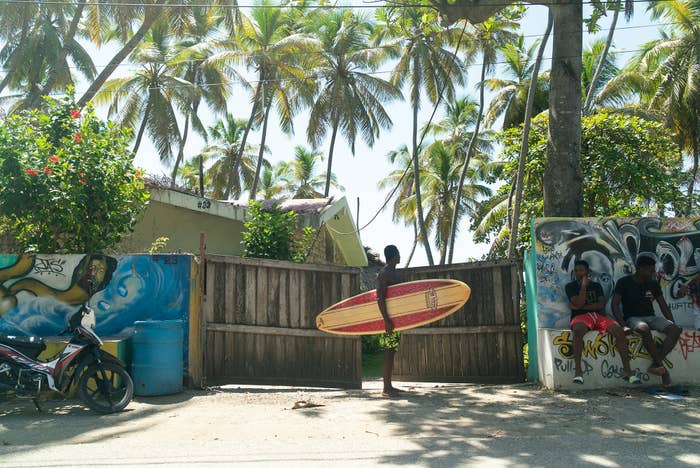
The first surfers rode waves in this Haitian bay in the wake of a crisis over a decade earlier. After a catastrophic earthquake in 2010, an American physician who traveled to the country to help with the emergency response founded a surfing program that drew dozens of local kids and turned a hobby into a profitable project for the neighborhood, as a growing trickle of tourists rented boards and signed up for surf lessons. But in the years since, as funds dwindled and founding members departed, Surf Haiti languished and is now on the verge of extinction, with only a handful of surfers out on the water during any given week and barely any customers.
It has become a common story in Haiti: Well-intentioned ventures established by foreigners have failed to produce the long-term relief that inspired their initial missions. Some left too early, without providing the community with the resources necessary to continue the projects. Others have mismanaged funds, or worse — more than 200 UN peacekeepers abused or engaged in exploitative relationships with women, impregnated dozens of them, and left the country, later refusing to pay child support. All efforts have been stunted by political instability and the series of cataclysms battering the country.
One week after Jules’s surfing session last month, an earthquake struck Haiti, killing more than 2,200 people, followed by a destructive tropical storm within days.
Available estimates place the nation’s unemployment rate as high as 70% — most locals lack the resources to continue surfing. In addition to drawing tourists to the area, the surf project aimed to provide an escape from daily realities for those who couldn’t leave the country.
And yet, even that escape has become inaccessible for many.
Wolvenson Gilles, 27, watched from the shore as Jules did a 360 on a wave and landed softly on his board, his legs dangling on either side of it.
Gilles said he was craving a ride, but his board was at home, broken.
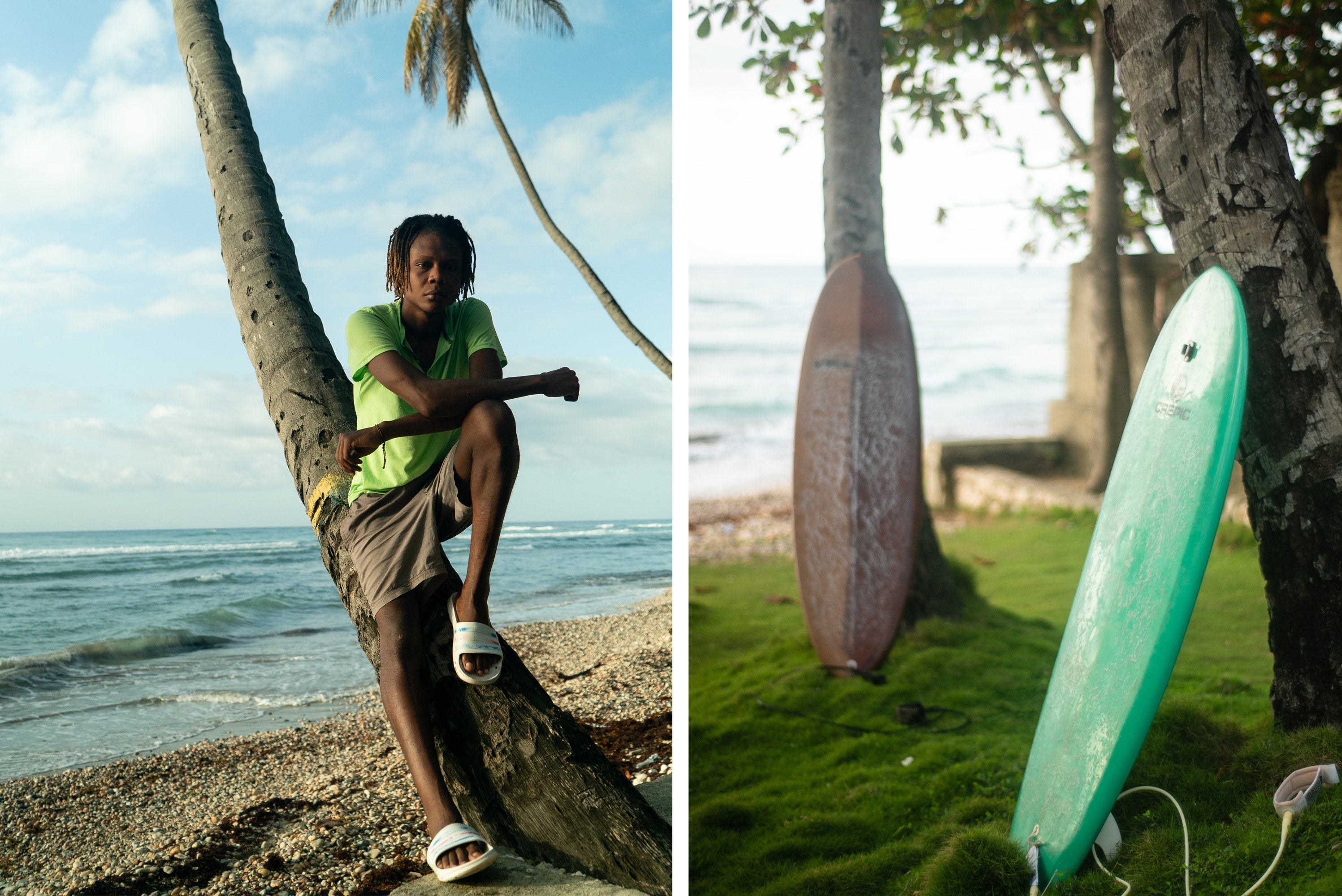
At first, he was afraid of the sea.
Gilles’s parents, like so many others, had told him if he plunged in he might drown. A bad spirit, they said, lurked in its waters. He met many others who shared the fear, including fisherfolk who couldn’t swim.
Gilles thinks the anxiety around the water is a legacy of slavery: generational trauma, passed down from ancestors who had been kidnapped, shipped to a French colony across the ocean, and forced to work coffee and sugar plantations that enriched white colonizers.
Curious and freedom-seeking, Gilles, who goes by Papito, learned to swim when he was 5. There wasn’t much to do in town except to play soccer on the beach or horse around on scraps of plastic in the water. Then one day when he was around 15, he was mesmerized by the sight of a dark-haired figure standing on a board dozens of miles into the horizon, weaving through the waves.
Ken Pierce had recently left Kauai, Hawaii, after seeing footage of the January 2010 earthquake in Haiti, which had flattened much of the capital city, buried thousands under rubble, and filled tent camps with dazed and injured people. Pierce, an emergency physician, was among the legion of volunteers who streamed into the country. He brought a suitcase full of medical supplies — and a surfboard, just in case.
After settling in, he took a drive down the coast near Jacmel, a cultural hub that resembles a worn-down New Orleans, with some buildings boasting high ceilings, vivacious colors, and wrap-around verandas. Painters and sculptors in the city used rubble from pancaked buildings to make art. As Pierce later recounted, he kept looking over his right shoulder at the waves, looking for the right one — until, at last, he found it near Kabic Beach.
When he paddled back to shore, a group of local boys was waiting for him, bursting with questions, and a request to try his board out. Gilles remembers getting on Pierce’s surfboard, taking a wave, and plunging into the sea even before he was able to get off his knees.
By the end of the day, he was able to stand. For those fleeting moments gliding across the water, Gilles’s mind cleared — he wasn’t thinking about his damaged house or fear of aftershocks but was purely consumed by the thrilling challenge of trying to keep from flying off the board.
Within months, Pierce had rented a house on Kabic Beach, imported more boards, and started teaching local kids to surf. He started Surf Haiti, a nonprofit organization, intended to establish the country as a surfing destination and provide jobs for people in the community.
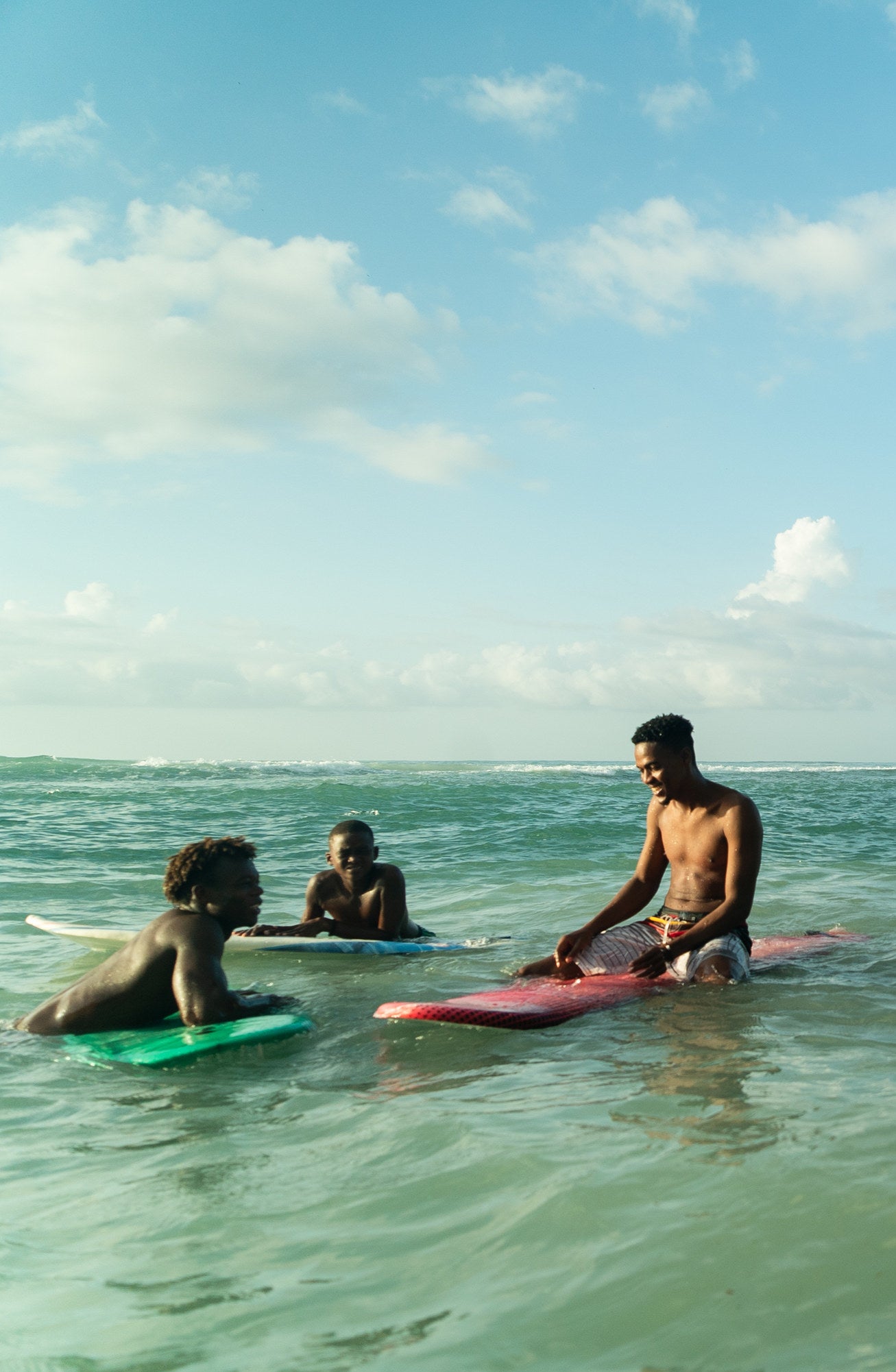
The organization grew to 30 members, who bonded over their shared passion for the ocean. They set up a sign with a price list for surf lessons and board rentals on the street, and watched as tourists — mostly foreign aid workers who drove south for some R&R — began trickling in. Donations of boards and bathing suits for the members of Surf Haiti started arriving from the US. A New York–based surfboard design company made a special board for Jules, whose local celebrity was growing, and soon the founding members of Surf Haiti began plotting to send Jules — whose own mother doesn’t know how to swim — to train in France so he could represent Haiti in the 2020 Summer Olympics in Tokyo.
On land, debris from the earthquake that had brought Pierce out to Haiti lingered on the streets for years, and money for reconstruction from the international community was either mismanaged by development authorities or promised but never delivered by donors.
But out in the waters of Kabic Beach, dozens of young people were falling into a new pastime. Those who knew how to swim taught those who didn’t, and within a few years, the surfing community was bustling. The kids rented out boards to visitors. Then, as they honed their skills on the boards, they started giving surfing lessons themselves. In what is a luxury for most teenagers in Haiti, they were both in school and making money on the side.
“Surfing is in Haiti to stay,” Pierce, who returned to the US in 2012, told the online publication Roads & Kingdoms in 2014. (Pierce declined to be interviewed for this story, saying the surge of COVID patients in his hospital has left him unavailable.)
In 2016, Surf Haiti hosted its first international surfing competition. Over two days, DJs played music on the beach, local artists promoted their work, and restaurants filled up with visitors. A similar event took place the following year. The community had a shot at making headlines abroad not for political crises or traumatic natural catastrophes, but for being talented and entrepreneurial.
Surf Haiti had become “like a family” and its members “were connected,” said Andris during a humid and cloudless afternoon near Kabic Beach in August.
It seemed like the tides had turned in this corner of Haiti.
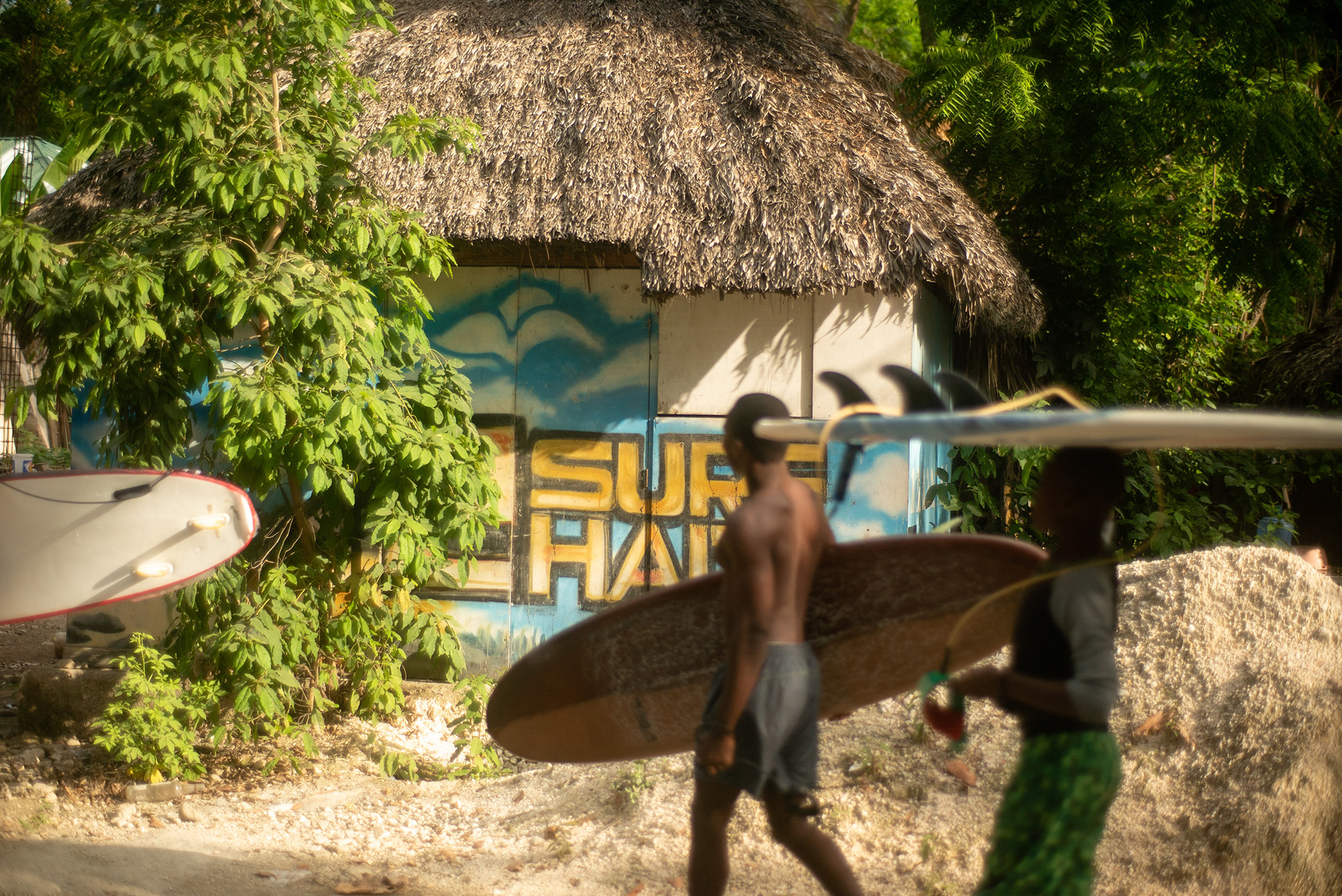
The trouble began in July 2018 in the capital city of Port-au-Prince, 54 miles north.
The government had just announced a 50% increase in fuel prices following an agreement with the International Monetary Fund, eliciting protests that turned violent, with demonstrators looting stores and police firing tear gas. The protesters called for accountability, most notably regarding the whereabouts of $2 billion from PetroCaribe, an oil deal with Venezuela that was meant to help Haiti invest in infrastructure and social programs.
Economic growth was grinding to a halt and inflation was soaring. The question on everyone’s mind: What did Haiti have to show for the $13 billion from the world, thousands of volunteers, and countless projects?
Tourists were barely coming to Haiti — and many Haitians were leaving, including Gilles, who moved to the Dominican Republic in December 2019 for two years so he could find a job and save some money. Today, he’s trying to set up a small shop selling snacks and drinks on the Haiti–Dominican Republic border. Though he longed to stay in southern Haiti, he said, “I really want a job and to feel independent.”
Around half a dozen of Surf Haiti’s founders and older members were among those who left, most of them to the US, after getting into college or finding jobs.
When boards began breaking, there wasn’t anyone to bring new ones. Wax became scarce. Visitors slowed to a trickle, and the kids who had waited by the shore for Pierce to paddle back in years earlier were now in college, with no job prospects and no income.
“The people who were there to motivate us and support us haven’t been here as much,” Andris said.
And then, the pandemic hit. Jules's bid for the Olympics fell apart when he wasn’t able to gain the support he needed from sponsors and local authorities in Jacmel. Last year, less than a dozen people showed up for surf classes, a far cry from the years when that many showed each month.
In recent months, gangs took over the main route out of the capital city, cutting it off from the south; few dare traverse it. Another route, a long stretch of steep, narrow dirt road, is too dangerous if there’s even a trickle of rain. Water taxis are limited.
The stream of visitors to Kabic Beach is, for now, virtually shut off. Remaining Surf Haiti members say they plan on selling t-shirts with the organization’s logo and hand-crafted souvenirs online.
In the meantime, it’s mostly locals in the water, less than half a dozen of them on this August morning. The regulars are teaching their younger siblings to surf in an effort to keep the sport going. Samuel Andris, Frantzy’s 13-year-old brother, stayed close to the shore during a recent morning, pausing to observe the waves’ buildup and trying to catch the smaller ones.
Further out, Jules practiced his more advanced moves. He learned some of them while surfing in the Dominican Republic in 2019, during the only competition he has attended abroad. After a while, he emerged from the water, patted his adopted mutt, Brutus, on the head, and climbed the steps up to the patio of the abandoned house — Pierce’s home, years ago. With no job prospects or a functioning gym in the neighborhood, Jules spends most of his time here doing push-ups on the grass.
He still dreams of going to surfing competitions in Brazil, Hawaii, and Tahiti.
“It’s like someone that wakes up and has to walk,” Jules said. “I see surfing the same way.” ●
